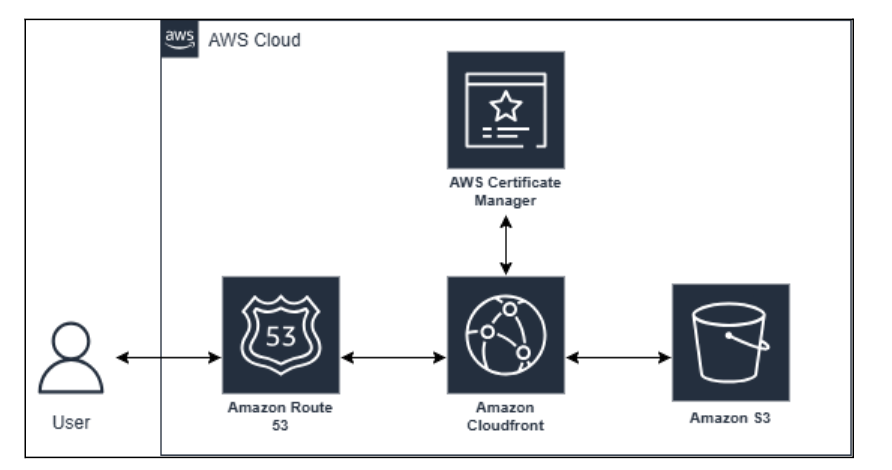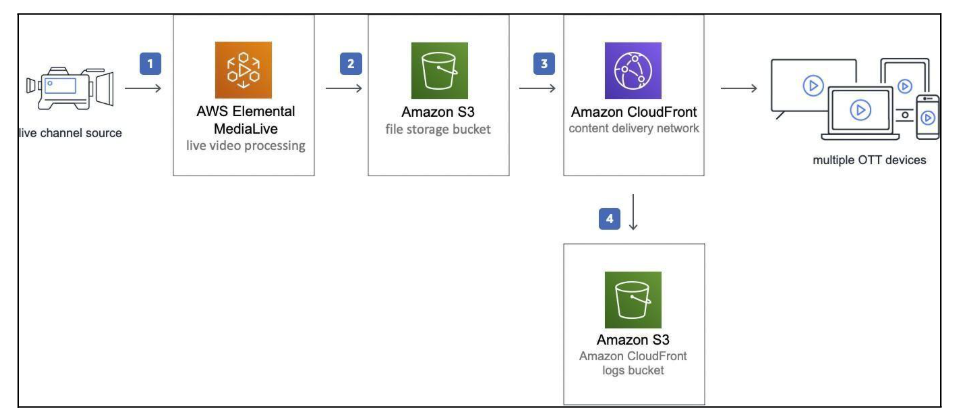Biweekly AWS Bytes: Week 1 - Let's Understand the Power of Amazon S3
Welcome to Week 1 of KTM One’s biweekly AWS blog series! Every two weeks, we’ll explore a different AWS service. Today, we’re diving into one of the most fundamental and widely adopted services in AWS: Amazon S3 (Simple Storage Service).
What is Amazon S3?
Amazon S3 is AWS’s go-to cloud storage service—scalable, secure, and built to handle data of any size, from anywhere.
Key Highlights
❖ Store Anything, Access Anywhere
Upload unlimited data and access it globally with just an internet connection.
❖ Durable & Highly Available
Built for 99.999999999% durability and high uptime, so your data is always safe and accessible.
❖ Fast & Secure
Get quick, reliable data access with built-in security and encryption.
❖ Perfect for Every Use Case
From websites to backups, archives, IoT, and big data—S3 fits it all.
❖ Grows With You
Whether you’re a startup or an enterprise, S3 scales effortlessly with your needs.
❖ Pay Only for What You Use
No hidden costs. Use it, store it, and pay just for that—simple and cost-effective.
❖ Smart Data Management
Organize, automate, and optimize with lifecycle rules, tiering, and analytics.
❖ Security & Compliance Ready
Control access and meet key compliance standards like SOC 2, ISO 27001, GDPR, and HIPAA with ease.
Top Use Cases of Amazon S3
Hosting Websites and Migrating
Key Highlights
Amazon S3 is a scalable, cost-effective solution for hosting websites and migrating data to the cloud. It supports both static and dynamic websites when integrated with services like Lambda and API Gateway. S3 offers high availability, custom domain support, and seamless traffic handling. For migrations, it provides secure, efficient data transfer from on-premises or other clouds through services like AWS DataSync and the Snowball family, with features like versioning and backup ensuring data integrity. With integrations like CloudFront and Route 53, S3 makes website hosting and migration simple and reliable.
Common Problem Statements
1. Serverless Website Hosting
How can we host static or dynamic websites without managing traditional servers or infrastructure?
2. Low-Cost, High-Availability Hosting
How do we ensure scalable, globally available website hosting while keeping costs under control?
3. Seamless Data Migration to the Cloud
What’s the most secure and efficient way to migrate data from on-premises or other clouds to AWS?
4. Content Integrity and Backup
How can we maintain data integrity with versioning and backup during and after migration?
Solution Approach

Architecture Workflow
● Amazon S3 stores and hosts static website content with high scalability, durability, and low cost.
● Amazon CloudFront delivers content globally with low latency by caching at edge locations.
● Amazon Route 53 manages DNS routing for seamless, high-availability traffic flow to the website.
● This serverless setup reduces infrastructure overhead while ensuring fast, reliable, and cost-effective website hosting at scale.
Data Backup and Restore
Key Highlights
Amazon S3 is ideal for backing up and restoring data, offering high scalability and durability. It supports S3 Lifecycle policies, allowing automatic transitions of data to more cost-effective storage classes like S3 Glacier for archival purposes. Features like Cross-Region Replication and AWS Backup enable disaster recovery and compliance.
Common Problem Statements
● Long-Term Storage Cost Optimization
How can the organization minimize storage costs for database backups that are rarely accessed after 180 days?
● Data Lifecycle Management
What strategy can be implemented to automatically transition backup data to lower-cost storage tiers as it ages?
● Durability & Compliance
How can the organization ensure high durability and meet any compliance or retention requirements for archived database backups?
● Backup Retrieval Strategy
What is the most efficient way to retrieve backup data when needed, even if it is stored in cold or archival storage classes?
● Operational Simplicity
How can the backup process be automated to reduce operational overhead while still aligning with access patterns and cost targets?
Solution Approach

Architecture Workflow
Back up your database securely with Amazon S3, taking advantage of its high durability and availability. To optimize long-term storage costs, set up S3 Lifecycle Policies that automatically transition data to S3 Glacier Deep Archive after 180 days.
This approach ensures:
● Secure and scalable backup storage
● Automated cost savings over time
● Access to archived data when needed, without compromising reliability
Ideal for organizations that need to retain backup data long-term but rarely access it after a few months.
Data Lakes and Big Data Analytics
Key Highlights
S3 serves as the foundation for data lakes, enabling large-scale analytics with tools like Amazon Athena for SQL queries and AWS Glue for ETL processing. It integrates with other AWS services like Amazon Redshift for advanced data analytics.
Common Problem Statements
● Scalable Data Storage
How can we store growing volumes of structured and unstructured data without complex infrastructure?
● Cost-Effective Analytics
How can a small business run analytics without investing heavily in traditional data warehouses?
● On-Demand Querying
How can we quickly run SQL queries on large datasets without loading them into a separate database?
● Automated Data Processing
How can we streamline ETL workflows to prepare data for reporting and insights with minimal manual
effort?
Solution Approach

Architecture Workflow
● Amazon S3 acts as the central data lake for storing raw sales reports, product inventories, and customer logs.
● Its low cost, high durability, and scalable architecture make it ideal for large-scale analytics.
● Data in S3 is automatically cataloged using AWS Glue for easy discovery and organization.
● Amazon Athena enables direct SQL querying on S3 data without needing complex infrastructure.
● This setup helps businesses convert raw data into insights efficiently while keeping storage costs low
Content Storage and Media Streaming
Key Highlights
Amazon S3 provides a reliable and scalable solution for storing media files like images, videos, and audio. When combined with Amazon CloudFront, it ensures fast, global content delivery. For video processing, AWS Elemental MediaConvert seamlessly transcodes videos into streaming-ready formats—making S3 ideal for modern content platforms.
Common Problem Statements
● Global Live Streaming
How can we stream live events to a global audience with low latency and high reliability?
● Traffic Surge Handling
How can we maintain seamless media performance during traffic spikes or viral content surges?
● Fast & Buffer-Free Playback
How can we deliver media content with minimal buffering and fast load times across devices and regions?
● Scalable Media Storage
How can we store and manage large volumes of high-quality media content without investing in complex
infrastructure?
● Automated Video Processing
How can we automate the conversion of uploaded videos into streaming-ready formats with minimal manual
intervention?
● Cost Optimization for Media Delivery
How can we reduce costs while delivering high-quality streaming experiences using cloud-based tools?
Solution Approach

Architecture Workflow
● Amazon S3 serves as the central storage for both original and transcoded video files.
● Its durable, scalable, and cost-effective nature makes it ideal for storing large media assets.
●Source videos are uploaded to S3, where they are accessed by other AWS services for processing.
● AWS Elemental MediaConvert is used to transcode source videos into various resolutions and formats.
● It processes videos directly from the S3 bucket and outputs adaptive bitrate streaming formats like HLS or DASH.
● This enables seamless playback across different devices and network conditions.
● Amazon CloudFront delivers video content to viewers worldwide with minimal latency.
● It uses the S3 bucket or MediaConvert output as the origin and caches content at edge locations.
● This ensures smooth and reliable streaming experiences for end users.
● Amazon Route 53 manages DNS routing and supports custom domain names for the streaming platform.
● It directs user requests to the CloudFront distribution, allowing access through branded, user-friendly URLs.
Conclusion
Amazon S3 is a versatile and powerful service that goes far beyond just cloud storage. Whether you’re backing up data, hosting a website, analyzing big data, or streaming media, S3 provides a secure, scalable, and cost-effective solution to meet your needs.
Stay tuned for more insights in our upcoming posts on AWS services!

